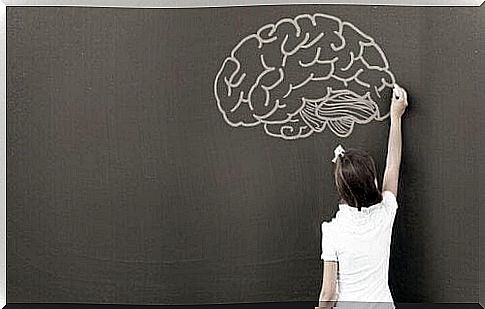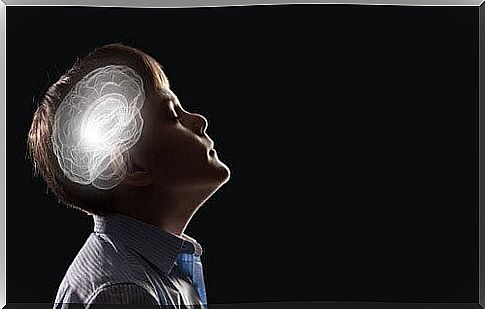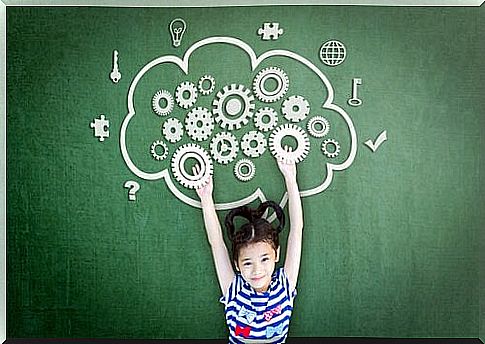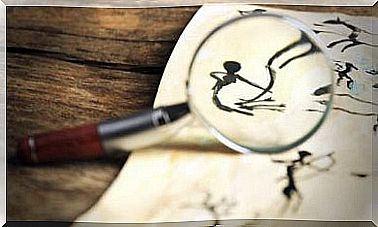The Neuropsychology Of Childhood Development

Over the past decades, interest in learning and developmental problems in children has grown steadily. This is how the neuropsychology of childhood development was born. This discipline addresses the relationship that exists between the maturation process of the central nervous system and behavior during childhood. It also gives a central place to the evaluation of neurodevelopment in the prevention and early detection of possible disorders.
Chávez (2003) tells us that in order to determine whether a child has problems with his neurodevelopment, it is important to know the organization and normal development of the central nervous system. Indeed, knowledge of the nervous system and its development constitute the basis for the prevention and detection of various disorders.
Likewise, Rains (2003) refers to alterations in the nervous system and brain maturation due to prenatal, perinatal and postnatal causes. These alterations, in almost all cases, lead to neuropsychological disorders in childhood. If these are not detected in time, their sequelae may increase; this is why the authors stress the importance of neuropsychology of infantile development.
Other authors, such as Weber and Reynolds (2004) emphasize the influence of environmental factors in brain development. To do this, they carried out studies in which they analyzed the association between brain plasticity and traumatic events during childhood. These scientists explain that in the United States, of all children who have suffered abuse (a traumatic event), between 27% and 100% develop physical, behavioral, social, cognitive or emotional problems.
It would therefore seem that the study of neuropsychology of childhood development focuses on risk factors and possible psychopathological and neuropsychological disorders that children may subsequently suffer.

Origin of childhood brain damage
According to the authors Cuervo and Ávila, the etiology of childhood brain injuries can be classified according to various indicators, depending on when they occur:
- Prenatal (toxoplasmosis, intrauterine malnutrition, intrauterine abuse, among others)
- Perinatal (hypoxia, meconium, etc.)
- Postnatal (cranio-encephalic trauma, infections, malnutrition, etc.)
It is therefore important to take a complete clinical history at the time of assessment. This should include all information on the characteristics and conditions of development during the first years of life. Some authors classify the main causes of brain injury according to the type of damage into different categories:
- Traumatic
- Vascular (haemorrhages)
- Infectious (meningitis, toxoplasmosis)
- Metabolic (galactosemia)
- Neurotoxic
These authors emphasize the importance of brain plasticity and neuropsychological maturity in childhood to assess sequelae and recovery from injury.
Childhood Developmental Neuropsychology Assessment
Some authors claim that the assessment of childhood developmental neuropsychology is not the same as that of an adult. This is because developmental neuropsychology primarily studies the development of cognitive functions and their relationship to brain maturation throughout the life cycle. Childhood developmental neuropsychology focuses on:
- First, the differences that exist in brain maturation, from birth to adolescence.
- The differences between the adult brain and the developing brain.
Neuropsychological maturity
Neuropsychological maturity is defined as the level of organization and maturing development that allows cognitive and behavioral functions to flourish, depending on the chronological age of the person. Particularly emphasized are changes during development, especially those that take place in childhood.
Thus, the evaluation and the intervention of the neuropsychology of the infantile development must start from specific objectives according to the age of the child.

Child development assessment
In childhood, the etiology of neuropsychological disorders can be separated into two groups:
- Subjects with a specific affectation of maturation development.
- The subjects who, after a normal initial development, suffer from a pathological accident which leaves sequelae and alters this development in a local or diffuse manner.
Areas that should be assessed in childhood neuropsychology
- Motor skills
- Manual address
- Right-left orientation
- Orofacial praxia
- Verbal motor control
- Perception
- Visual
- Hearing
- Touch
- Language.
- Receptive and expressive abilities of oral language
- Psycho-educational aspects
- Memory
- Verbal and non-verbal
- Short and long term
Some neuropsychological tests of childhood development
- Infant neuropsychological maturity questionnaire
- ENI Test (Infant Neuropsychological Assessment)
It is therefore obvious that the neuropsychological intervention of infantile development must be general. Currently, in our society, the detection, rehabilitation and stimulation of functions promoting neuropsychological maturity are more than urgent. It is therefore important to see the development of disciplines such as neuropsychology of infantile development, to take care of children’s health.









